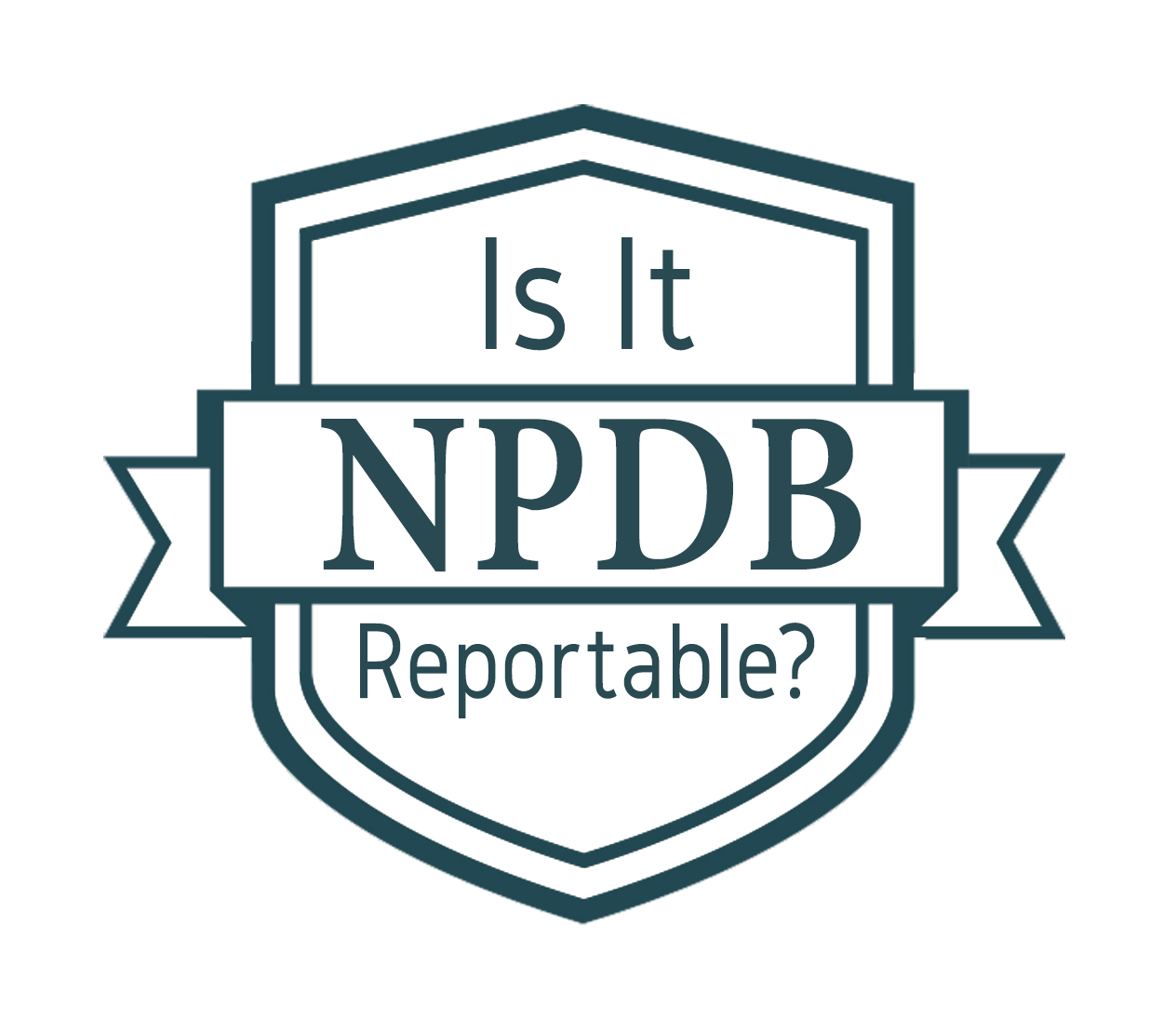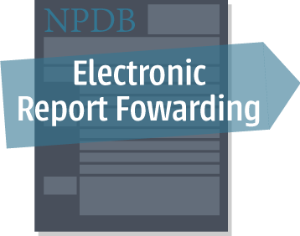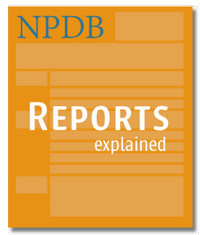NPDB Insights

Is It Reportable?
If a state board denies the application of a practitioner who did not have the required number of practicum hours, should the action be reported?
No. A board should not report cases in which a health care practitioner, entity, provider, or supplier simply does not meet the threshold criteria for licensure.
Save Time Using Electronic Report Forwarding

Electronic Report Forwarding allows reporting entities to provide certain reports directly to the appropriate state licensing and certification authority (state licensing board) through the secure NPDB system. The state licensing board selected by the reporting entity gets a notification when the report is submitted. We also send the reporting entity a notification when the board views the report, saving reporters time, enhancing data accuracy, and assisting organizations in fulfilling their reporting requirements.
Please note that if you are a reporting organization—who is required to submit malpractice payments, clinical privileges actions, or professional society actions to the NPDB and the appropriate state licensing board—it is your legal responsibility to make sure they have received the forwarded report.
How to Use Report Forwarding
for Reporting Organizations
By forwarding reports, state licensing boards get an electronic copy right away, you have peace of mind that you have fulfilled your reporting obligation, and no envelopes or stamps are needed.
- Sign in and enter your report information as usual. A list of state licensing boards enrolled in Electronic Report Forwarding will appear in the certification section.
- Select the appropriate state licensing board and the option to authorize the NPDB to send an electronic report notice.*
- You will get an email from the NPDB when the state licensing board views the report or if the report is not viewed within 7 days.
- If the report hasn't been viewed within 7 days, you will get a notification from the NPDB to take further action by sending a copy of the report to the state licensing board.
*If the appropriate state licensing board isn't listed, you will need to send a copy of the report to that board.
For more information, visit the How to Forward Reports page.
for State Licensing Boards
You will get a notification when a new report is submitted, have access to the report right away, and can save a copy of the report electronically. To enroll in report forwarding and avoid wasting paper, simply follow these steps:
- Sign in, select Administrator Options, and then Regulated Professions.
- Select/verify the professions you regulate.
- Select the option allowing the NPDB to send you electronic report notices for regulated professions.
- You will receive an email when the NPDB system forwards the reports to you.
- Sign in to view the reports.
For more information, visit the How to View Electronic Notices of Action page.
Customer Service Center (CSC) Quick Tip

Did you know that you can have multiple Data Bank administrators and users on your NPDB account?
As a Data Bank administrator, you can create accounts for users with unique permissions to access query, report, registration, or billing information. For example, you can create an account for a user in your financial department to access charge receipts and other billing information.
Having multiple administrators is especially helpful if the current administrator leaves your organization or goes on vacation. Multiple administrators can help make sure your organization never has difficulty accessing the NPDB.
To enhance the security of your NPDB account, you should ensure that all administrators accurately maintain user permissions and passwords. Quickly deactivating user IDs after changing an employee's status or responsibilities will also prevent security threats.
If your organization is up for renewal, the attestation process will only permit the individual with the Data Bank administrator role to submit the attestation for your organization.
To learn more, visit our How to Manage User IDs and Passwords page.
Three Important Report Types

Whether your receive or submit reports, knowing the differences between Initial Action, Revision-to-Action, and Correction Reports can help you better understand them:
- An Initial Action Report is a new report of a medical malpractice payment, adverse action, or judgment or conviction submitted to the NPDB. An entity that reports an initial adverse action must also subsequently report any related modification of that action.
- A Revision-to-Action Report is a report of an action that is related to a previous adverse action that was already reported. The Initial Action and all related Revision-to-Action reports are disclosed together.
A hospital reports a clinical privileges action when it suspends a practitioner's clinical privileges for 90 days for unprofessional conduct. The hospital later reduces the suspension to 45 days. Since this reduction in the length of the suspension modifies a previously reported action, the hospital must submit a Revision-to-Action Report. The Initial Report documents that the hospital suspended the subject's clinical privileges for 90 days, and the Revision-to-Action Report documents that the hospital reduced the suspension to 45 days. Note that in this example both reports—the 90-day suspension report and the 45-day suspension report—were correct when they were filed. Therefore, the change is noted with a Revision-to-Action Report, not a Correction Report.
Additional examples include the following:- Additional sanctions have been taken against the subject of a report based on a previously reported incident
- Reinstatement of privileges, license, etc. Length of an action is reduced or extended Original suspension or probationary period ends
- A Correction Report fixes an error or omission in an Initial Action or Revision-to-Action Report. The previous report is replaced by the corrected report. Each changed field is marked with an asterisk. Examples of corrections include the following:
- Adding more detail to narrative descriptions Correcting a typo
- Adding an additional name or license number for the practitioner
Please note, if a report requires too many corrections, the reporter may void the report and submit a new Initial or Revision-to-Action report.
Visit the NPDB Guidebook to learn more.
The latest updates and resources are available at https://www.npdb.hrsa.gov.
Previous editions of NPDB Insights are available in our archive.
 An official website of the United States government.
An official website of the United States government.

